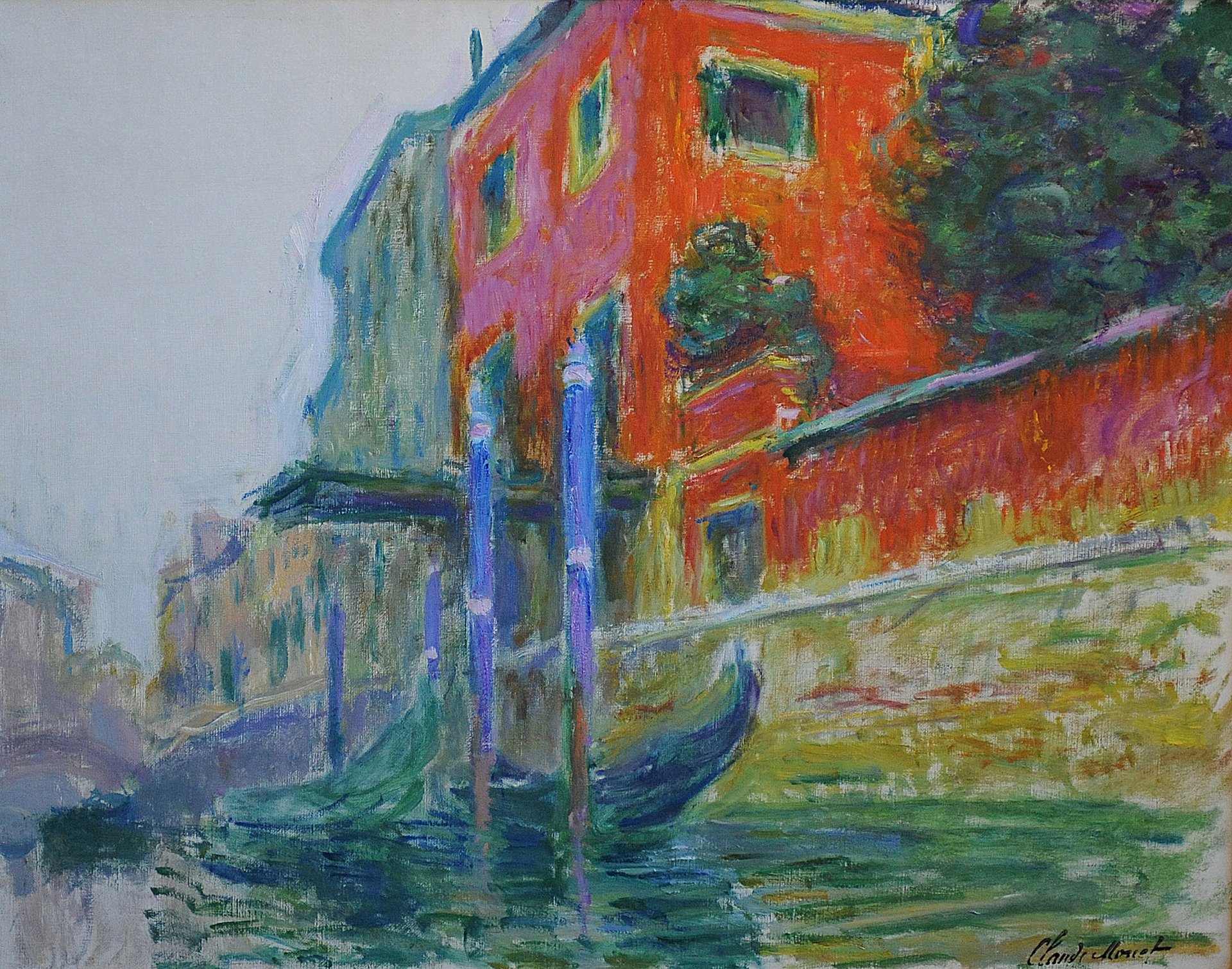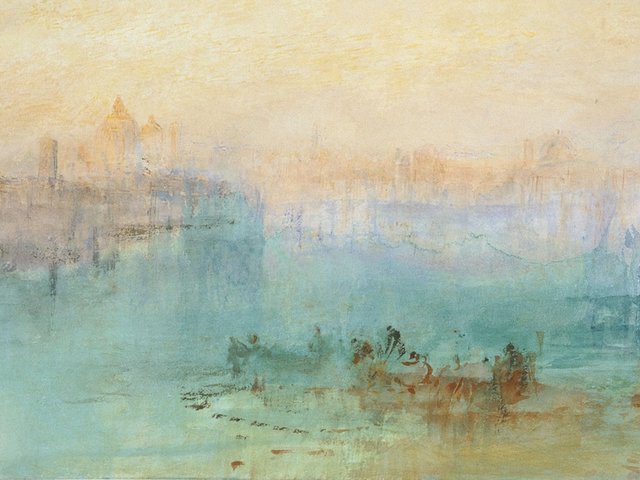Later this year, work will be complete on the digital cataloguing of the Turner Bequest, the trove of 37,000-plus works by J.M.W. Turner left to the nation on his death in 1851, which eventually found their way to the Tate Gallery, now Tate Britain. Most of it is already online. The 250th anniversary of Turner’s birth this year prompted me to disappear again down this most fulfilling rabbit hole. And particularly Turner’s sublime Venice watercolours.
Endless wonder—Turner’s and our own—is in these little paintings. Take San Giorgio Maggiore, Venice, at Sunset, from along the Riva degli Schiavoni (1840). It pictures Venice at its most inchoate, with the Bacino di San Marco a milky blur, a solitary gondola amid green and violet waves, and the island of San Giorgio a pale red mirage above, “gleaming uncertainly”, as A.J. Finberg—the bequest’s pre-digital cataloguer—wrote of another watercolour. Although he initially misidentified the motif, the critic John Ruskin described this San Giorgio as “a full flushed second twilight”, a term he used for a “faint reflection” of the sunset. “Exquisitely beautiful for tender colour and atmosphere.”
Among the countless artists to have responded to Venice, Turner is unmatched in understanding these unique hues and ambience. Of course, the city was a natural subject for someone so acutely attuned to light and its effects; how could Turner miss this open goal?
Perplexingly unfulfilling
But it’s not that simple. One could say the same of Monet, whose paintings of Venice are the subject of a major show at the Brooklyn Museum opening in October. I hope that exhibition might change my mind, but I have always found his Venice perplexingly unfulfilling: a sunset too lurid and unsubtle, buildings too squat, heavy and wobbly, the subtleties of its water seemingly beyond his formulaic brushwork. Although Monet eventually threw himself into painting the city, it seems notable that he initially described it as “too beautiful to be painted” and “ungraspable” and suggested that “no one has given the idea of Venice”.

Claude Monet, The Red House (1908) Collection Galerie Larock-Granoff
Turner made light of the ungraspability. But he also recognised that Venice, for all its beauty, has an innate melancholy, a mood I find curiously absent in Monet. Perhaps, despite their shared obsession with the effects of light, this is a fundamental difference between a Romantic painter and an Impressionist facing the same views: that in the best depictions of the city, it is as much felt as seen. It is for this reason that I prize Francesco Guardi’s views of the city over Canaletto’s. However much Canaletto pleases the eye, Guardi hits the gut, too. In Guardi, I can imagine the filth and squalor that 18th-century visitors encountered in Venice, as well as its otherworldly splendour.
Modernist rejection
Of course, through the 20th century, it became harder for artists to paint Venice—not just because of diminishing capacity for original reflections, but also because it is so squarely sealed in its historic identity. Filippo Tommaso Marinetti’s Futurist statement—“We repudiate the old Venice … We want to cure and heal this putrefying city, this magnificent sore from the past”—was typical of the iconoclastic spirit of the Modernist avant-garde. And yet, in the century’s final decades, a great body of work responding to the city was painted. Howard Hodgkin’s Venice, though described in thick oil rather than watercolour, is reminiscent of Turner’s. It is as elegiac as it is beautiful.
I recently saw Hodgkin’s View from Venice (1984-85) in the late painter’s London studio. It reflects the view—but almost entirely represents the artist’s feeling—after shutters were opened from a hotel room, looking out to a view across the Bacino to San Giorgio, not far from where Turner painted his view. Here, again, Venice gleams uncertainly in art, and conveys its timeless poetry.



